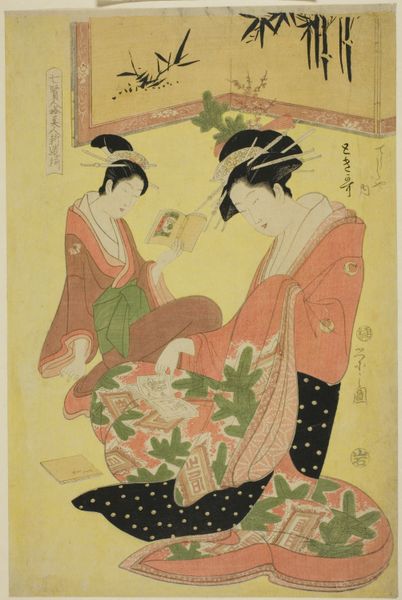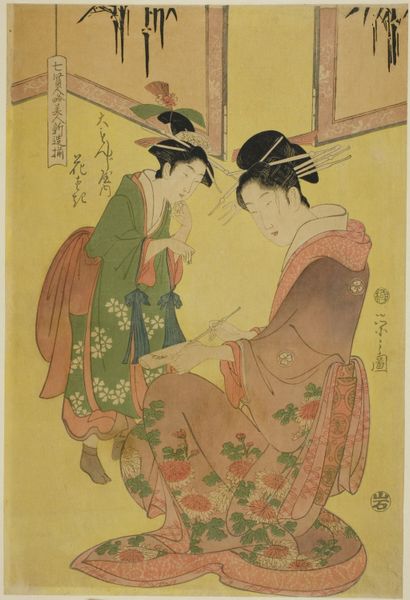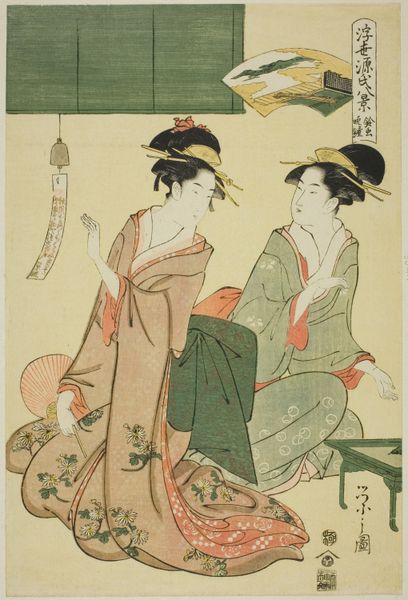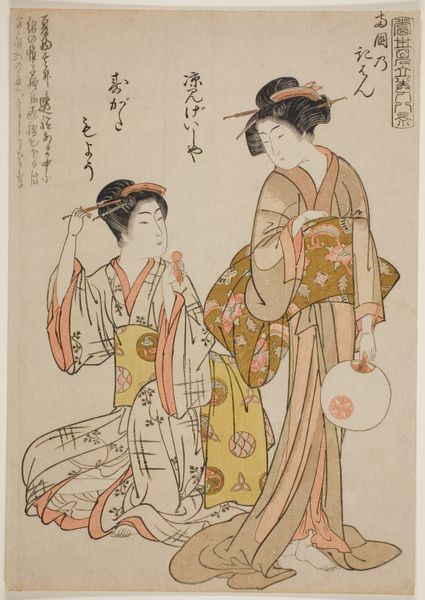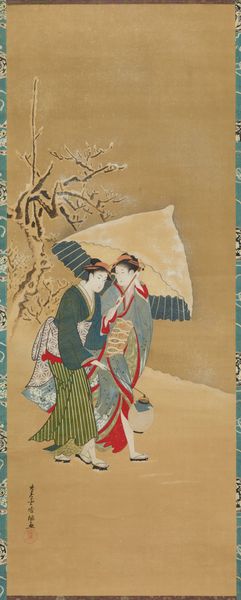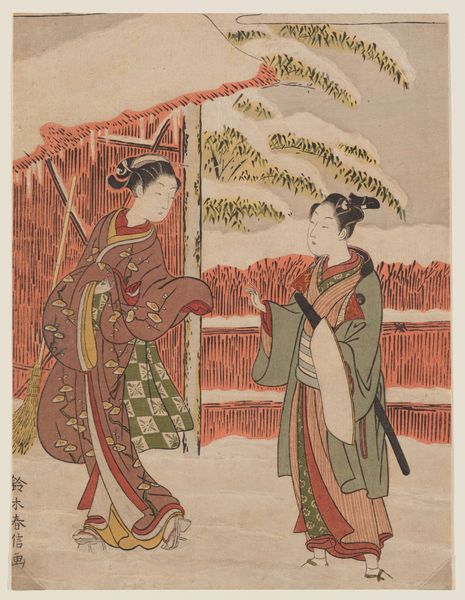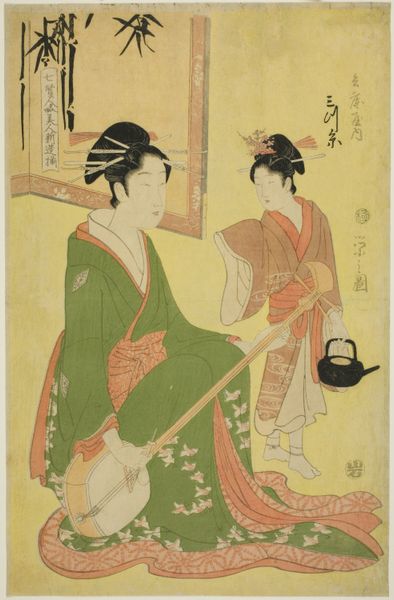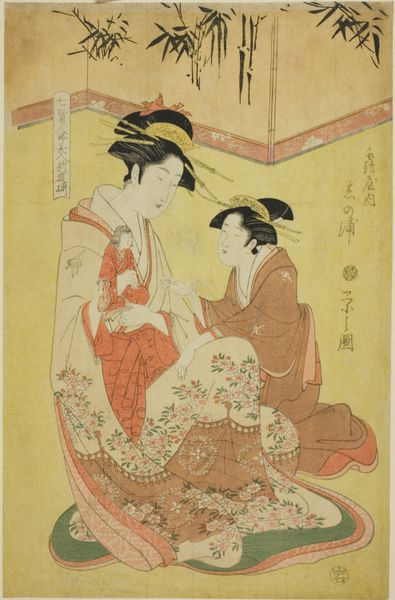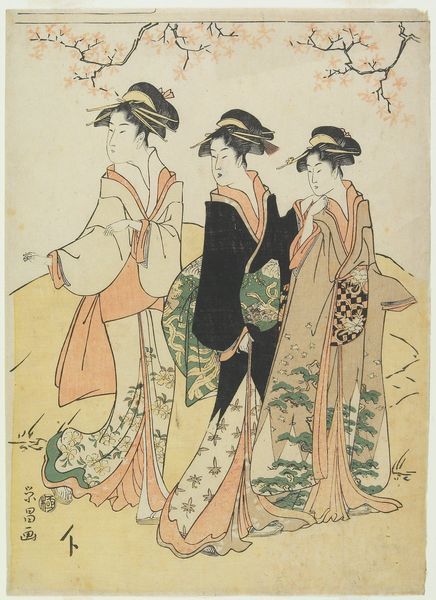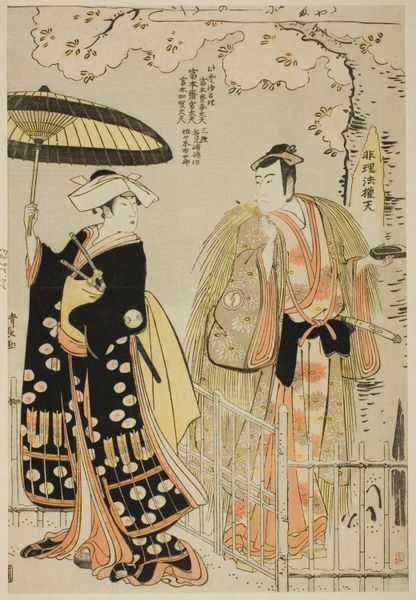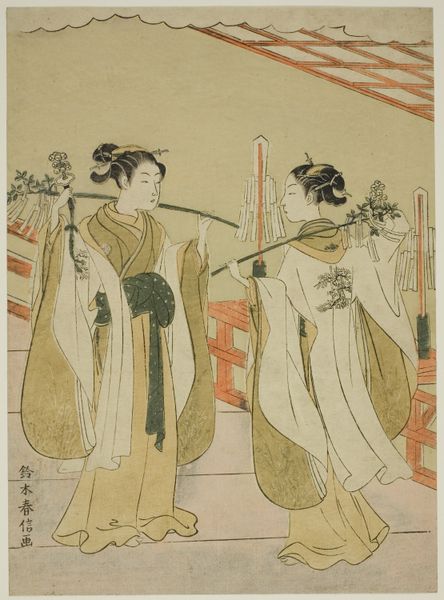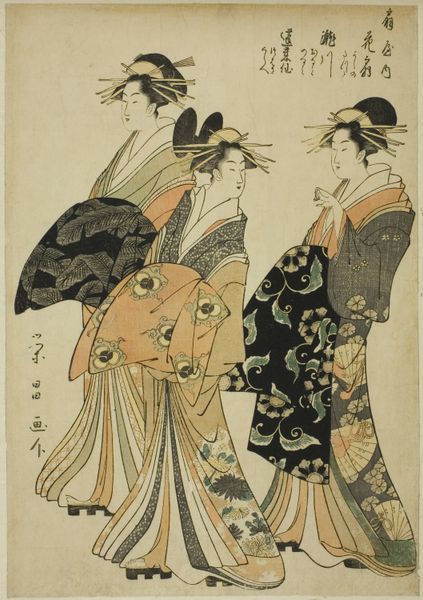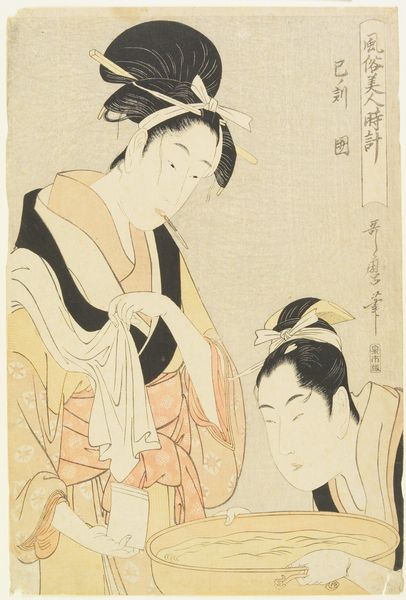
Beauties Parodying the Seven Sages - A Selection of Younger Courtesans (Shichi kenjin yatsushi bijin shinzo zoroe): Miyagawa of the Matsubaya c. 1793
0:00
0:00
painting, print
#
portrait
#
painting
# print
#
asian-art
#
ukiyo-e
#
figuration
Dimensions: 38.1 × 25.4 cm (15 × 10 in.)
Copyright: Public Domain
Editor: This print, titled *Beauties Parodying the Seven Sages*, was created around 1793 by Chōbunsai Eishi. It features two figures, apparently younger courtesans, one playing a stringed instrument. I’m struck by the way the artist uses pattern; the peacock feathers on their robes almost seem to vibrate. What can you tell me about the historical context of this work? Curator: Well, this print exemplifies Ukiyo-e, a genre deeply rooted in the floating world of Edo-period Japan. These prints weren’t simply portraits; they were cultural documents reflecting the lives, fashions, and aspirations of the urban merchant class. What do you notice about the title referencing "Seven Sages?" Editor: It feels… unexpected. Courtesans and ancient sages seem worlds apart. Was this contrast intended to be humorous or subversive? Curator: Precisely. These "parodies" of historical or literary figures were popular because they cleverly layered meanings. On the one hand, these prints provided entertainment by celebrating the pleasures and beauty of the courtesans. On the other hand, by associating them with learned figures, they added a layer of sophistication. Where do you think prints like these might have been displayed and consumed? Editor: I imagine they were proudly displayed in homes or pleasure houses as signs of taste and worldliness, correct? Curator: Absolutely. It's worth remembering, however, that Ukiyo-e prints like this one circulated within specific social circles. They contributed to constructing a visual language that both celebrated and regulated certain segments of the society and certain ways of living. Editor: That’s a fascinating insight! I never considered the print’s potential role in solidifying social roles even as it seemingly celebrated freedom. It makes me think differently about the power of art. Curator: Indeed. By examining these prints through the lens of social history, we can unravel the intricate relationship between art, power, and representation in 18th-century Japan.
Comments
No comments
Be the first to comment and join the conversation on the ultimate creative platform.
